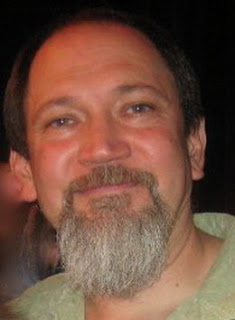With only two performances left for Guapa,–tonight and tomorrow night–Marketing Assistant Stefanus Gunawan sits down with Daniel Jáquez to chat about politics, world events, but more importantly about Milagro Theatre’s upcoming performance, Dance for a Dollar which runs from May 2-25. ¡Bailen!
About Dance for a Dollar—
There’s
a little dance hall in Queens called Club Las Palmas, where a man can take the
hand of a woman, embrace his culture and whirl away the cold. In Las Palmas, las muchachas que bailan run the joint
and serve up los hombres a little home-style dignity. Check your worries at the
door and feel your body come to life among the joyful sounds of duranguense, folklórico and cumbia!
- Thank you for taking your time with
us. In your words, what is Dance for a
Dollar? How did the idea for Dance for a
Dollar come about?Dance for a Dollar is a stage play
where I mix three of my passions: theatre, dance and Mexican folkloric. The play started with my interest in knowing
the type of dance the Mexican community was dancing in New York. The specific subject matter of the play came
to me after reading an article about a restaurant where the waitresses sold
dances to the clients, a place that by night turned into a dance club. After much research and interviews, we
focused on a small segment of the New York Mexican community to create this
play. - I read that the scene takes place in
Las Palmas in Queens, NY. Could you
explain to us why you chose this club over the others?Las Palmas, in this play, is a made up
place. It is a mix of all the places we
visited during our research and those places mentioned in our interviews.
- What types of dance or movements are
presented in the work?The play uses popular Mexican dances,
movement, and zapateado. I hope that the music and dance can help us
understand the characters a bit more: to know their passion, their pain, their
past and maybe their future. Some of the
movement we will be using is based on improvisations with the actors that
result in a physical response to the human condition lived by each of their
characters. This, I believe, makes the
resulting movement both very specific to the character and universal.

*
En español—
- Gracias por platicar con nosotros. Díganos
¿qué es Dance for a Dollar? ¿Cómo
empezó la idea de Dance for a Dollar?Dance
for a Dollar es una obra teatral en donde mezclo tres de mis
pasiones: teatro, danza y folklore mexicano. La obra empezó con mi interés por conocer el
tipo de danzas que bailaba la comunidad mexicana en Nueva York. La temática específica de la obra me surgió
al leer un artículo sobre restaurantes mexicanos en Queens, NY donde las
meseras vendían bailes a los clientes, un lugar que de noche se convertía en un
salón de baile. Después de varias
investigaciones y entrevistas, nos enfocamos en un segmento pequeño de la comunidad
mexicana neoyorkina para crear esta obra. - Leí que la obra se desarrolla en el club Las Palmas
en Queens, Nueva York. Explíquenos ¿por qué eligió este club y no otros?Las Palmas, en esta obra, es un lugar
inventado. Es una mezcla de varios
lugares que visitamos cuando estábamos haciendo nuestras investigaciones o que
nos contaron en las entrevistas. - ¿Qué tipo de danza o movimiento se presenten en la
obra?La obra incorpora bailes populares mexicanos,
movimiento corporal y zapateado jarocho.
Espero que la música y la danza nos ayude a entender a los personajes un
poco más: conocer su pasión, su dolor, su pasado y tal vez su futuro. El movimiento corporal que usaremos está
basado en improvisaciones con los actores que resultan en una respuesta física
a la condición humana que viven sus personajes. Esto, creo, resulta en una
expresión muy específica de cada personaje, pero también universal.
